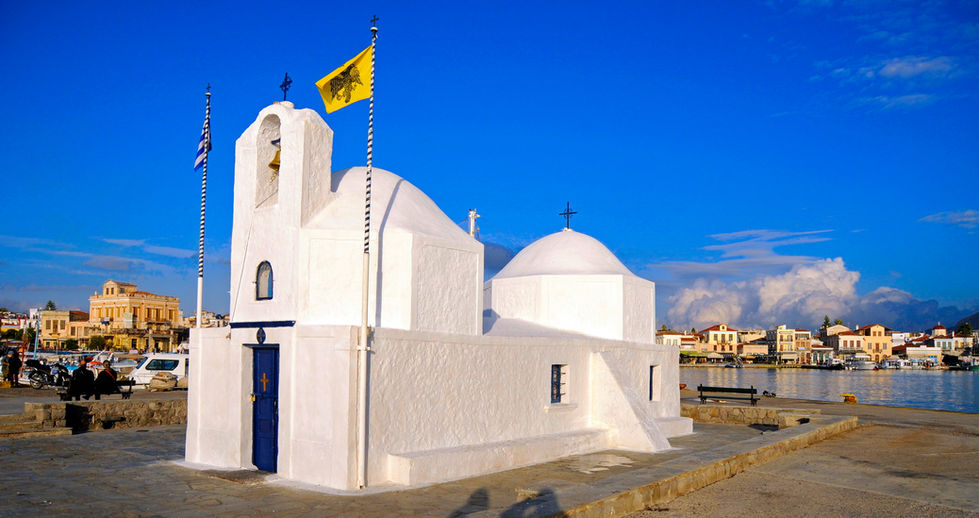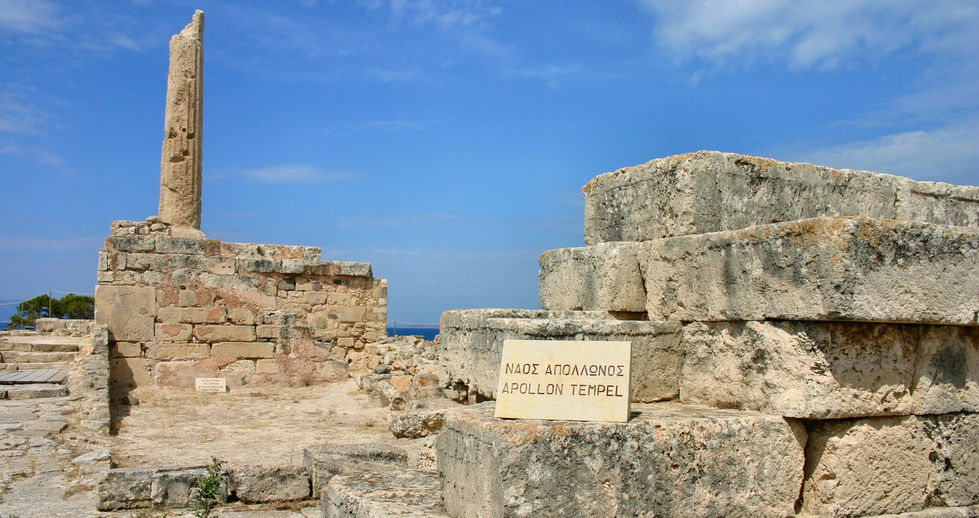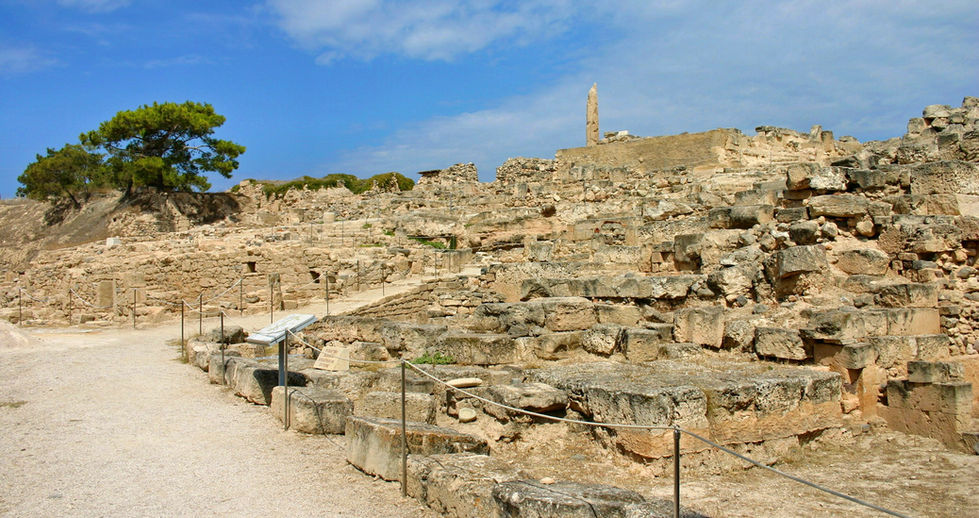
Call Us USA/CANADA (011 30) EUROPE(00 30) AUSTRALIA (0011 30)Mobile: 697 305 7711
GREECE PRIVATE TRAVEL TOURS & TRANSFERS
HYDRA IS AN OPEN MUSEUM
We visit Hydra Island as travelers, not as tourists
Hydra is one of the Saronic Islands of Greece, located in the Aegean Sea between the Saronic Gulf and the Argolic Gulf. It is separated from the Peloponnese by a narrow strip of water. In ancient times, the island was known as Hydrea ( derived from the Greek word for "water"), a reference to the natural springs on the island.
There is one main town, known simply as "Hydra port" (pop. 1,900 in 2011). It consists of a crescent-shaped harbor, around which is centered a strand of restaurants, shops, markets, and galleries that cater to tourists and locals (Hydriots). Steep stone streets lead up and outward from the harbor area. Most of the local residences, as well as the hostelries on the island, are located on these streets. Other small villages or hamlets on the island include Mandraki (pop. 11), Kamini, Vlychos (19), Palamidas, Episkopi, and Molos.
Geography - Demography. The municipality of Hydra consists of the islands Hydra (pop. 1948, area 49.6 km), Dokos (pop. 18, area 13.5 km), and a few uninhabited islets, total area 64.443 km.

Hydra Island island is a very popular tourist destination, mainly due to its picturesque Old Town with its red tiled houses and narrow stone-paved streets. Once a major seafaring community. These days the island’s wealth mainly comes from tourism, but fishermen and farmers can still be found.

Hydra Island Tour/ Greece Private Tours

Rubbish trucks are the only motor vehicles on the island, since by law, cars and motorcycles are not allowed. Horses, mules and donkeys, and water taxis provide public transportation. The town of Hydra Island is the unique settlement of the island. It counts some 3000 permanent residents and presents the originality that no vehicles are allowed within it. So the people, locals and visitors, go from one place to another only on foot or on donkeys’ back.
The inhabited area, however, is so compact that most people walk everywhere. Hydra benefits from numerous bays and natural harbors, and has a strong maritime culture.
The Town of Hydra Island is amphitheatrically. Arranged within a close bay situated approximately at the middle of the northern coast of the island. Also, it is surrounded by bare rocks and steep mountains. The first impression of the visitor, as the ship reaches the port, is the image of the high impressive Old Mansions overlooking the Town of Hydra Island. What follows is the view of the Old Defensive Bastions with their canons on site, which are still protecting the town from remote and forgotten enemies. Finally the spectacle is completed with the uncountable boats and yachts from any place of the world, mooring at the port.

In 2007, a National Geographic Traveler panel of 522 experts rated Hydra the highest of any Greek island (11th out of 111 islands worldwide) as a unique destination preserving its "integrity of place"
Boy on a Dolphin is a 1957 20th Century Fox romantic film set in Greece and shot in DeLuxe Color and CinemaScope. It was directed by Jean Negulesco and produced by Samuel G. Engel from a screenplay by Ivan Moffat and Dwight Taylor, based on the novel of the same name by David Divine. The film was Sophia Loren's English-language debut. She starred opposite Alan Ladd and Clifton Webb, with Alexis Minotis and Laurence Naismith in support. It was the first Hollywood movie shot in Greece.


Hydra eventually did join the cause of independence, and Hydra's contribution of some 150 ships, plus supplies, to fight against the Turks played a critical role. The Greek admiral Andreas Miaoulis, himself a settler on Hydra, used Hydriot fire ships to inflict heavy losses on the Ottoman fleet. Eventually the fleet of Hydra - along with those of the other two naval islands of Psara and Spetses - were able to wrest control of the eastern Aegean Sea from the Ottoman Empire.
With the end of the revolution and the creation of the Greek state, the island gradually lost its maritime position in the Eastern Mediterranean, igniting an economic crisis that led to a period of hardship and unemployment. The main reason was that with the creation of the Greek state, Hydra's fleet lost the privileges that the Treaty of Küçük Kaynarca and the use of the Russian flag had given it. Another reason was that the traditional families who owned the majority of the fleet failed to foresee the benefits of participating in the steam ship revolution, which significantly cut shipping operational costs through reduced crew and independence of the winds, putting them at a disadvantage vis-á-vis the new shipping companies of Piraeus, Patras, and Syros. A third reason was that the new conditions made illegal activities such as piracy impossible. Once again, many inhabitants abandoned Hydra, leaving behind their large mansions and beautiful residences, which fell into ruin. The mainstay of the island's economy became fishing for sponge. This brought prosperity again until 1932, when Egypt forbade fishing along its coast. By World War II, the Hydriots were again leaving the island; many of them went abroad.
POROS IS AN OPEN MUSEUM


Poros is a small Greek island-pair in the southern part of the Saronic Gulf, about 58 km (36 mi) (31 nautical miles) south from Piraeus and separated from the Peloponnese by a 200 m (656 ft) wide sea channel, with the town of Galatas on the mainland across the strait. Its surface area is about 31 square kilometres and it has 3,780 inhabitants. The ancient name of Poros was Pogon. Like other ports in the Saronic Golf, it is a popular weekend destination for Athenian travelers.
Poros is an island with rich vegetation. Much of the northern and far eastern/western sides of the island are bushy, whereas large areas of old pine forest are found in the south and center of the island. It has a good road network and adequate tourist infrastructure, which makes it a popular resort for short holidays.
During the Roman period (86 BC to 395 AD) Poros was part of the Roman Empire along with Trizina, to which it was a tributary. In Byzantine times, Poros and other islands were often raided by the pirates that dominated the Aegean Sea.
In 1484 the Venetians occupied Poros and used it as a strategic port in their sea battles with the Ottomans. Poros was the most powerful city of the wider area, also governing Methana Island, Epidaurus, Damalas (Trizina), Fanari and Valario.
During that time, the island had about 15,000 inhabitants, making it one of the largest cities in Greece. Venetian rule ended in 1715.
The Ottoman Period began in 1715, much later in Poros than in the rest of Greece. Shipping and commerce were the inhabitants’ main activities, but Poros’ fleet wasn’t as famous as Hydra’s or Spetses’ fleet, due to the fact that it did not participate in many sea battles. Poros had an important role during the Greek Revolution in 1821, due to its strategic position. The Greek revolutionary leaders, often met in Poros to discuss and plan their future actions. The first Greek naval base was established in Poros in 1828 and remained there until 1878. In September 1828, the ambassadors of England, France and Russia met in Poros with Ioannis Kapodistrias in order to determine the borders of the future Greek state, which was established two years later, in 1830.
Henry Miller (1891–1980) American writer wrote about Poros in "The Colossus of Maroussi", considered his best book writes about Poros ..."I don't know which affected me more deeply-the story of the lemon groves just opposite us or the sight of Poros itself when suddenly I realized we were sailing through the streets. If there is one dream which I like above all others it is that of sailing on land. Coming into Poros gives the illusion of the deep dream. Suddenly the land converges on all sides and the boat is squeezed into a narrow strait from which there is no egress.

The men and women of Poros are hanging out of the windows just above your head. You pull in right under their frosty nostrils, as though for a shave and a haircut en route. The loungers on the quay are walking with the same speed as the boat. They can walk faster than the boat if they choose to quicken their pace."
AEGINA IS AN OPEN MUSEUM
The island of Aegina is one of the most popular tourist destinations as it is the closest island to Athens (only 16.5 nautical miles from the port of Piraeus).
According to the myth, the island took its name from a nymph, daughter of the river god Asopos, whom Zeus fell in love with and took with him to the island! From 11/1/1827 until 3/10/1829 Aegina town was the temporary capital of the newly founded Greek state. It was during that period when Governor Ioannis Kapodistrias had impressive neoclassical mansions built to house his headquarters that today are important tourist attractions.


Markellos Tower (built by Markellos, a 1821 War of Independence hero and later Governor of the island, which now houses the Kapodistrias Spiritual Center), Kapodistrias Orphanage (the first public building during Kapodistrias’ administration) and Aegina Cathedral (the first Cathedral of the Modern Greek State, it also housed Kapodistria’s Government and the first parliament of the modern Greek State).
The Markellos Tower today
Today the Tower of Markellos belongs to the municipality of Aegina and houses the Kapodistrian Cultural Center of the Municipality and the Center for Social Reflection “Spiros Alexiou”. On the ground floor occasional exhibitions take place and cultural events during which it is open to the public.
The Sanctuary of Apollo Delfinios, Kolóna
Located at a short distance from the harbour, the area took its name from a standing column (of Doric type), the only one remaining from a 6th Century BC temple. Mount Kolonas was a religious centre of the ancient town. Archaeological research has revealed the presence of more than ten historical buildings dating from the most recent Neolithic era (5th millennium BC) to the Mycenaean period (1600- 1200 BC). In front of the archaeological site lies a museum bearing the same name.
The Temple of Aphaia Athena
Even though the island small, it boasts a great number of sights and natural beauties, highlight of which is the famous Aphea Temple.
Close to Agia Marina lies the 500 BC Doric Temple of Aphaia Athena, the most important monument on the island. The temple was founded there and it formed an equilateral triangle with the Parthenon and the Temple of Poseidon at Sounion, the so-called “holy triangle” of antiquity. The most impressive part of the temple is its wonderful sculpted pediments, a large part of which is exhibited at the Glyptothek of Munich. Excavation findings are on display at the Archaeological Museum of Aegina.

Hydra Island
The town of Hydra Island is the unique settlement of the island. It counts some 3000 permanent residents and presents the originality that no vehicles are allowed within it. So the people, locals and visitors, go from one place to another only on foot or on donkeys’ back.
Rubbish trucks are the only motor vehicles on the island, since by law, cars and motorcycles are not allowed. Horses, mules and donkeys, and water taxis provide public transportation.

One Day Cruise
One of the beauties of traveling to Athens is a captivating cruise to the magical islands of the Saronic Gulf. Athens Day Cruises offers you the beauty of a day cruise to three islands, Hydra, Poros and Aegina with the promise of a world of pleasures on board. Imagine a day filled with golden moments on a day cruise from Athens, island hopping from Hydra, Poros and Aegina, aboard Athens Day Cruises, spacious, 3-deck cruise ships with every comfort and convenience to meet your expectations.





























































